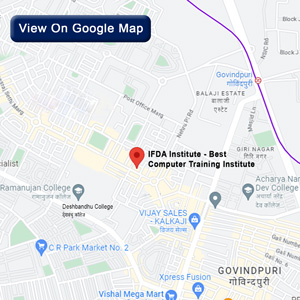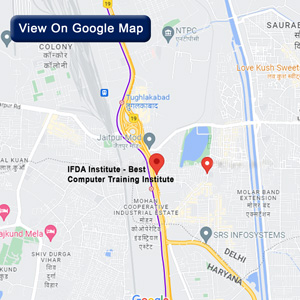Cloud Computing Course

Introduction to Cloud Computing
Cloud computing has revolutionized the ways that organizations and businesses manage and store their data, build their applications, and maintain the structures and platforms. Cloud computing skills are still in high demand as more companies shift their operations to the cloud. This course gives basic knowledge about cloud computing, with the focus on the idea and the concept of cloud, cloud technologies, cloud security, cloud architecture, and the opportunities for the cloud computing specialist.
What is cloud computing?
Cloud computing is the process of storing data and accessing applications and software over the internet and not on the personal computer or the server. In cloud computing, resources such as compute power, storage, and networks can be quickly obtained and can be expanded through a cloud provider. These resources can be accessed by organizations in a way that does not require them to monitor the infrastructure of the resources themselves.
There are three main types of cloud computing services:There are three main types of cloud computing services:
IaaS, or Infrastructure Utility, is built from scratch with the IT components of the cloud, like server space, virtual machines, or networks, which you can use to form cloud infrastructures. Example: AWS, Microsoft Azure.
IT and Software
Platform as a Service (PaaS): The cloud computing model where the service provider delivers a controlled and controlled cloud environment where application development is done without having to configure the underlying infrastructure. Example: AWS Elastic Beanstalk, Heroku.
Software as a Service (SaaS): Applications that are hosted and made available for use through the internet by the end users. Example: Gmail, Salesforce, Dropbox.
Benefits of Cloud Computing
FacultySome key benefits that drive cloud adoption include:Some key benefits that drive cloud adoption include:
Cost savings: no need to recoup infrastructure costs since only the resources consumed are paid for.
Flexibility: Be able to flex services up and down to suit the need.
Availability: Mobility between services and providers.
Mobility: This allows the use of applications and data from any location.
Cloud Computing Models
There are three main cloud computing models:There are three main cloud computing models:
Public Cloud: Services that are deployed in the provider’s data center and are accessible by multiple users. Example: AWS, Microsoft Azure.
Private Cloud: The dedicated cloud environment may be located in the company’s premises or leased from a cloud service provider.
Hybrid Cloud: It is a combination of both public and private clouds. Some data is kept secure while others are stored in the public cloud.
Cloud Computing Technologies
Some important technologies powering cloud services include:Some important technologies powering cloud services include:
Virtualization: This is the process through which physical hardware is transformed into virtual compute resources.
Containerization: Package software code with libraries and dependencies for consistent deployment.
Kubernetes is an open-source container orchestration system that provides a platform for deploying containers.
Microservices: The approach towards application development where large applications are divided into smaller microservices.
Cloud Security Challenges
While cloud computing provides many advantages, it also raises new security concerns, including:While cloud computing provides many advantages, it also raises new security concerns, including:
Security: Protect the customer data that is hosted and managed in the cloud.
Security management: control of access and user account access.
Security protection: protect against the injection of malware and DDoS attacks.
Compliance: Adhere to regulatory requirements, especially for data sovereignty.
Cloud solutions include secure data encryption, user authentication, access control, and network security monitoring to reduce these risks.
Cloud Architecture
The cloud is rapidly growing, and this implies vast potential for IT professionals to acquire skills that are deemed relevant in the market. Some top cloud computing careers include:Some top cloud computing careers include:
- Cloud architect
- Cloud developer
- Cloud security engineer
- Cloud data engineer
- Cloud solutions architect
- Cloud support engineer
Conclusion
Cloud computing is a rapidly growing IT technology with promising prospects for significant advances in efficiency and economies of scale. This is a basic cloud computing course that introduces the concepts of using the leading cloud platforms and services in developing the new generation of applications that are agile, scalable, and reliable. The course equips you with technical knowledge and skills to be ready to transform and manage the cloud in your organization or advance into diverse cloud computing professions.
- Written By - Natasha Singh









